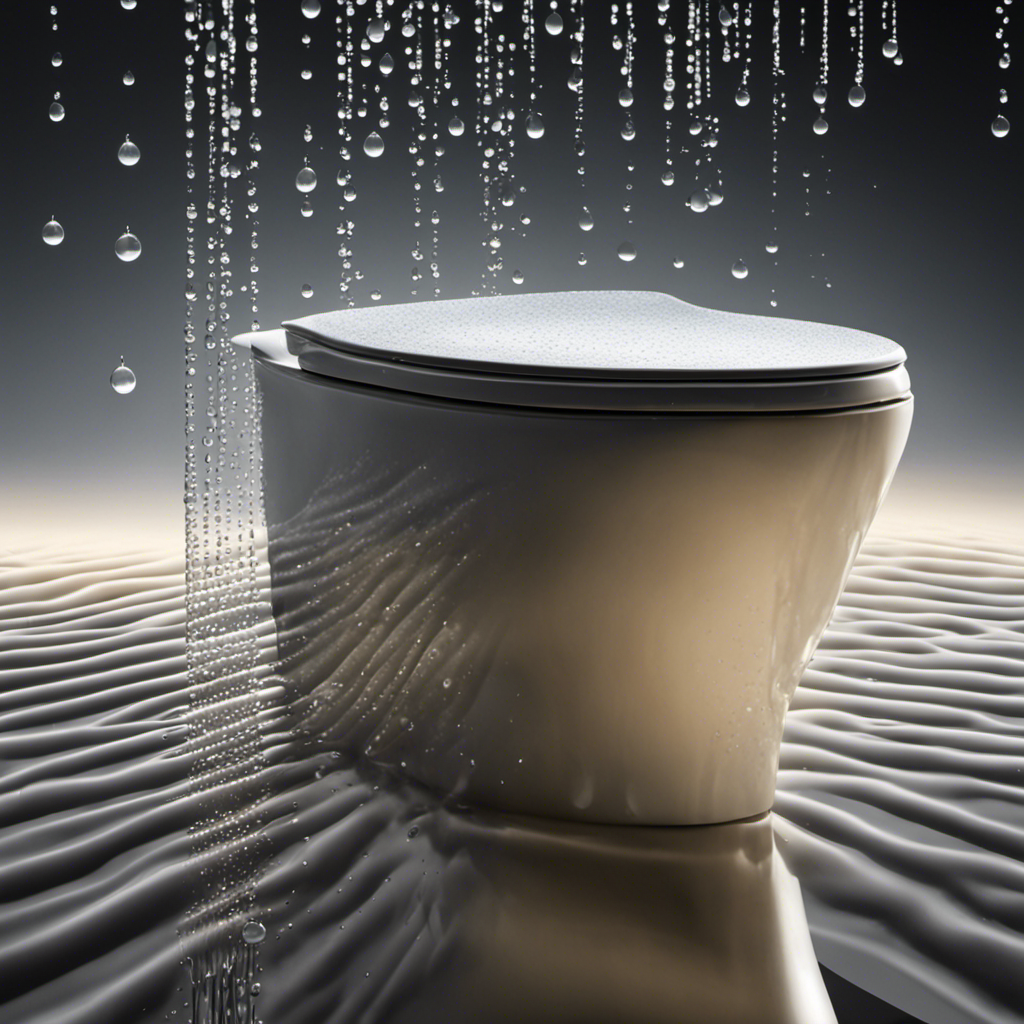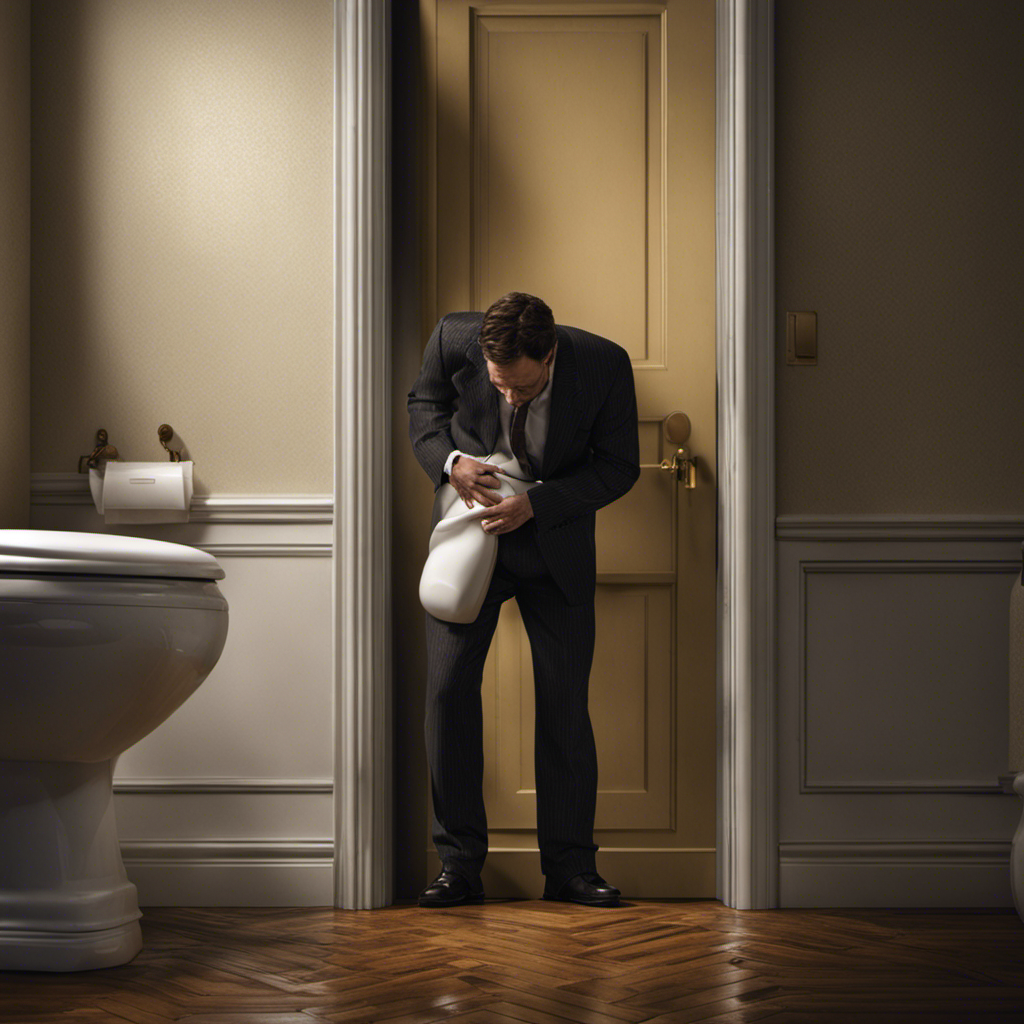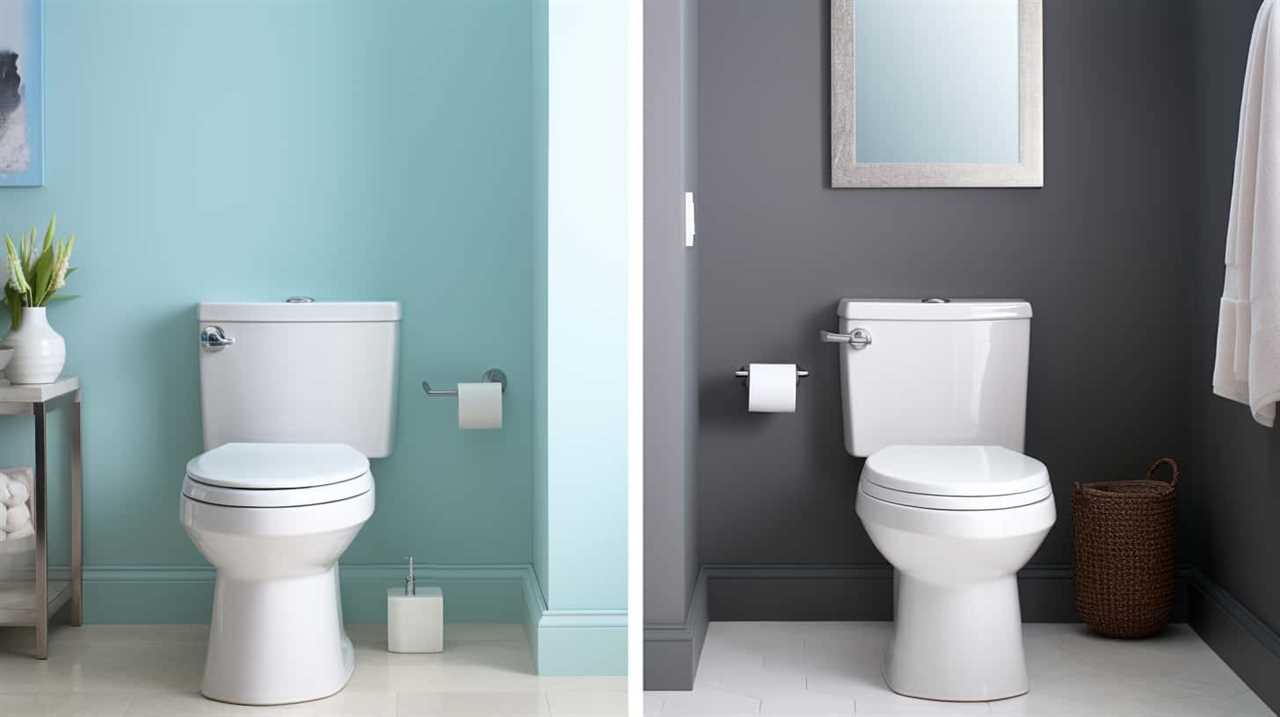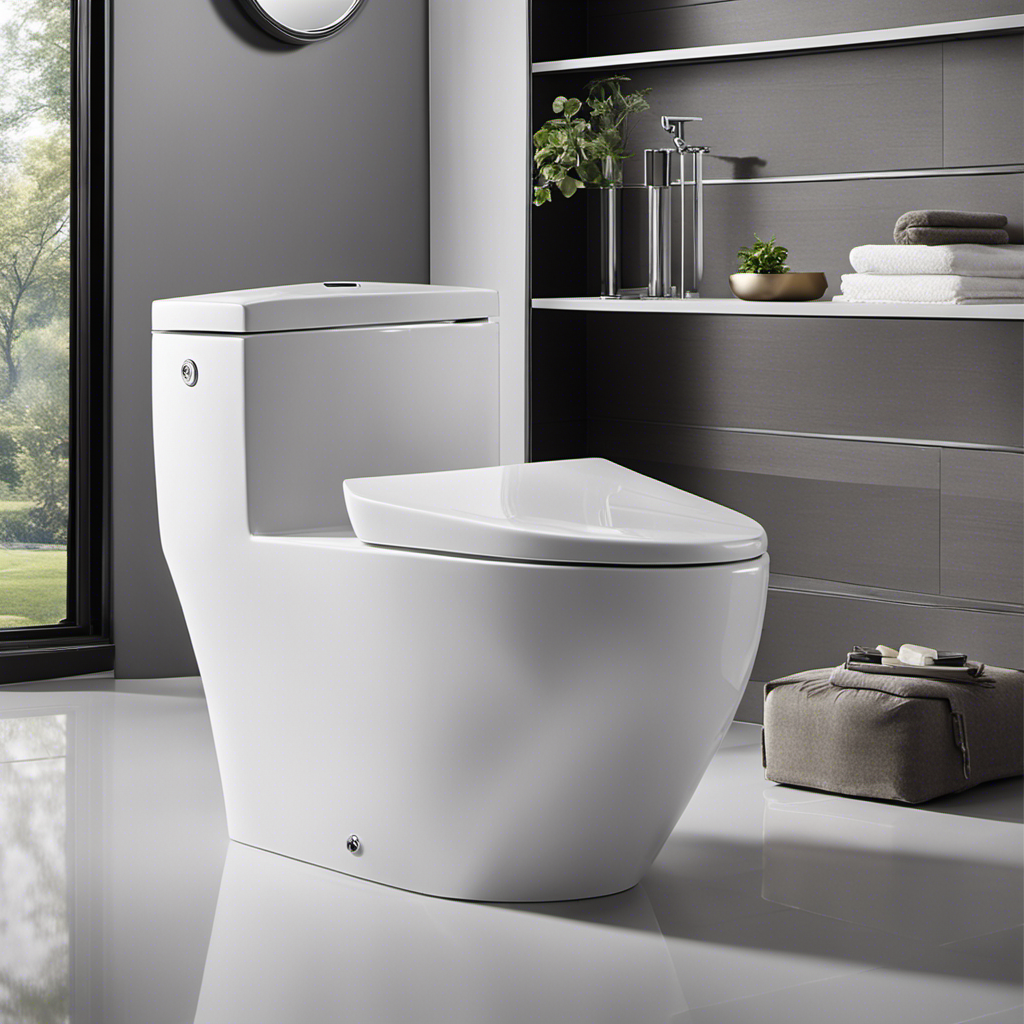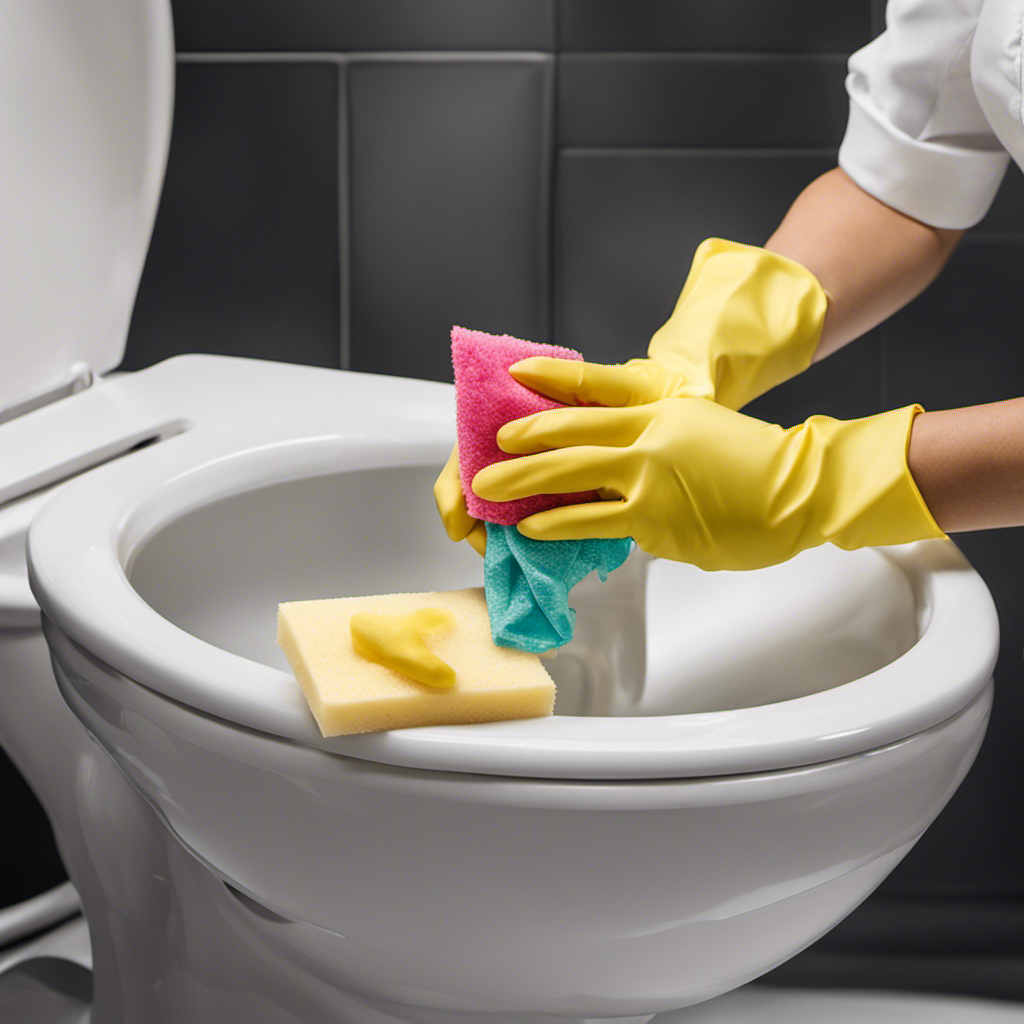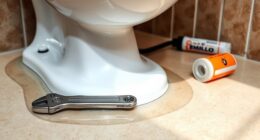Have you ever wondered why your toilet is sweating? Well, let me tell you, it’s not just because it’s nervous! There are actually some common causes behind this pesky problem.
In this article, we’ll delve into the world of toilet sweating, exploring the ins and outs of condensation and how humidity plays a role. But fear not, my friend, for I shall also provide you with tips to prevent this damp dilemma and fix any issues that may arise.
Let’s get to the bottom of toilet sweating, shall we?
Key Takeaways
- Toilet sweating occurs when warm, moist air meets a cold surface, causing condensation on the toilet surface.
- High humidity levels in the bathroom, poor ventilation, and inadequate insulation worsen toilet sweating.
- Toilet sweating can lead to water damage, mold growth, and structural issues if left unchecked.
- Properly ventilating the bathroom, insulating the walls and pipes, and using foam insulation kits can help prevent toilet sweating.
Common Causes of Toilet Sweating
One common cause of your toilet sweating is when the cold water in the tank comes into contact with the warm air in your bathroom. This temperature difference causes condensation to form on the outside of the toilet bowl, resulting in the phenomenon known as toilet sweating.
To prevent this, you can consider improving the toilet insulation. Insulating the tank and the pipes can help regulate the temperature of the water and reduce the chances of condensation forming.
Another potential cause of toilet sweating could be plumbing leaks. If there are leaks in the pipes connected to the toilet, it can lead to increased moisture in the bathroom, contributing to the sweating issue.
Regularly checking for and fixing any plumbing leaks can help alleviate this problem.
Understanding Condensation in Toilets
To understand why your toilet is sweating, it’s important to grasp the concept of condensation. Condensation occurs when warm, moist air comes into contact with a cold surface, causing the water vapor in the air to turn into liquid droplets.
In the case of toilets, this can happen when the water inside the toilet tank is significantly colder than the air in your bathroom. As a result, moisture in the air condenses on the surface of the toilet, leading to visible droplets or ‘sweat.’
While toilet sweating may not seem like a major issue, it can potentially cause long-term damage if left unchecked. Excessive condensation can lead to water damage, mold growth, and even structural issues.
It’s important to be aware of the signs of toilet damage, such as water leaks, cracks, or a constantly running toilet, and address them promptly to prevent further issues.
How Humidity Affects Toilet Sweating
When humidity levels are high in your bathroom, it can increase the likelihood of condensation forming on the surface of the toilet. This is especially true in areas with poor ventilation or inadequate insulation. Climate change has further exacerbated this issue, as it has led to increased humidity levels in many regions. Insulation plays a crucial role in preventing toilet condensation by reducing the temperature difference between the interior and exterior of the toilet. By insulating the walls and pipes, you can minimize the transfer of heat and moisture, thus reducing the occurrence of toilet sweating. Additionally, proper ventilation is essential to remove excess moisture from the air and prevent it from condensing on the toilet surface. The table below highlights the impact of climate change and the effects of insulation on toilet condensation.
| Factors | Impact on Toilet Sweating |
|---|---|
| Humidity Levels | Increases likelihood |
| Climate Change | Exacerbates the issue |
| Insulation | Reduces occurrence |
| Ventilation | Helps prevent condensation |
Tips to Prevent Toilet Sweating
Properly ventilating your bathroom and insulating the walls and pipes can help minimize condensation on the surface of your toilet. Toilet insulation is an effective solution to prevent sweating. Insulating the tank and bowl helps maintain the temperature of the toilet, preventing cold surfaces from coming into contact with warm, humid air.
This insulation can be done using foam insulation kits specifically designed for toilets. Additionally, ensuring proper ventilation in the bathroom is crucial. Installing a ventilation fan or opening windows during and after showering can help remove excess moisture from the air, reducing the chances of condensation. Adequate airflow helps to maintain a balanced humidity level, preventing the formation of sweat on the toilet.
Fixing Toilet Sweating Issues
You can easily fix the issue of toilet sweating by insulating the tank and bowl to maintain a balanced humidity level. Here are four steps to help you resolve this problem:
-
Choose the right insulation material: Opt for a foam insulation kit specifically designed for toilets. These kits usually include insulation pads and adhesive strips.
-
Prepare the surface: Clean the tank and bowl thoroughly to remove any dirt or moisture. Ensure the surface is dry before applying the insulation.
-
Apply the insulation: Cut the insulation pads to fit the tank and bowl surfaces. Use the adhesive strips to securely attach the pads. Pay attention to covering all exposed areas.
-
Regular maintenance: Periodically check the insulation for any signs of wear or damage. Replace as necessary to keep your toilet effectively insulated.
Frequently Asked Questions
How Often Should I Clean My Toilet to Prevent Sweating?
I clean my toilet regularly to prevent sweating. It’s important to maintain a clean toilet to avoid condensation buildup. Common causes of toilet sweating include high humidity levels and temperature differences between the toilet and the surrounding environment.
Can Using a Dehumidifier in the Bathroom Help Reduce Toilet Sweating?
Using a dehumidifier in the bathroom may help reduce toilet sweating, but increasing ventilation is a more effective solution. Additionally, exploring natural remedies, such as insulating the tank or using an anti-condensation toilet valve, can also help combat this issue.
Are There Any Health Risks Associated With Toilet Sweating?
Toilet sweating can be caused by high humidity levels in the bathroom. It is important to maintain proper ventilation to prevent this issue. There are no direct health risks associated with toilet sweating.
Can the Type of Toilet Bowl Material Affect Toilet Sweating?
Yes, the type of toilet bowl material can affect toilet sweating. Certain materials may be more prone to condensation due to temperature differences. Regular toilet bowl maintenance can help prevent sweating by reducing moisture buildup.
Is Toilet Sweating More Common in Older Homes or Newer Homes?
Toilet sweating is more common in older homes due to less insulation and outdated plumbing systems. However, the impact of climate on toilet sweating cannot be overlooked as it varies in different regions.
Conclusion
In conclusion, addressing the issue of toilet sweating requires a keen understanding of its underlying causes. By comprehending condensation and its relationship with humidity, we can take proactive measures to prevent this unsightly phenomenon.
Implementing simple tips such as insulating the tank, using a dehumidifier, or adjusting the ventilation can go a long way in resolving this problem.
By tackling toilet sweating head-on, we can ensure a more comfortable and visually pleasing bathroom experience.
